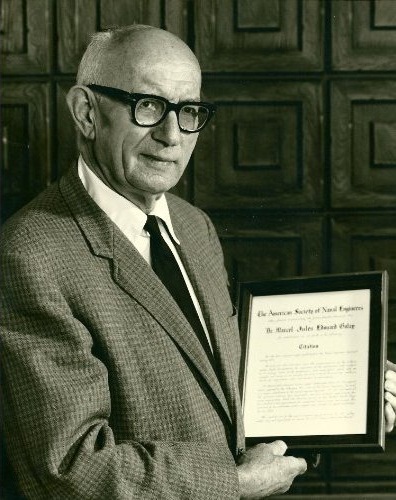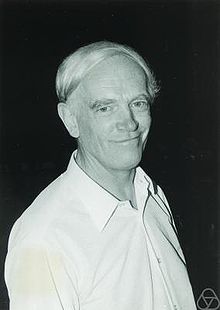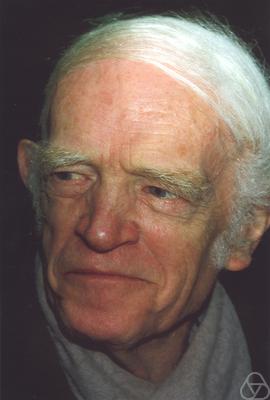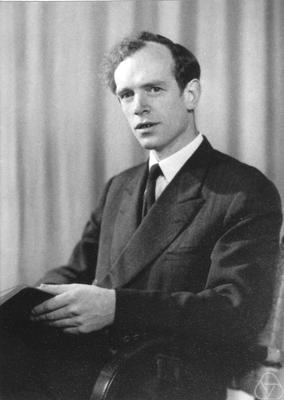<Back to Index>
- Information Theorist Marcel J.E. Golay, 1902
- Mathematician Ernst Witt, 1911
PAGE SPONSOR

Marcel Jules Edouard Golay (May 3, 1902 April 27, 1989) was a Swiss mathematician, physicist and information theorist, who applied mathematics to real-world military and industrial problems. He was born in Neuchâtel, Switzerland.
Golay studied electrical engineering at the Eidgenössische Technische Hochschule (Swiss Federal Institute of Technology) in Zürich. He joined Bell laboratories in New York City in 1924, spending four years there. He received a Ph.D. in physics from the University of Chicago in 1931.
Golay then joined the US Army Signal Corps, eventually rising to the post of Chief Scientist. He was based mostly in Fort Monmouth, New Jersey. He developed an IR "radar" based on its Golay Detector, the SCR-268T specifically designed to the detection of vessels (S/S Normandie was detected at its inaugural crossing). The SCR-268 (using Barkausen vacuum tubes) and the SCR-268T were to work together. However the 268T, only used in the Pacific theater was abandoned before the end of the war.
Between 1955 and 1963, Golay was a consultant for Philco
Corporation of Philadelphia, PA, and the Perkin - Elmer Corporation of
Norwalk, Connecticut. In 1963, Golay joined the Perkin - Elmer company full time as Senior Research Scientist. Golay worked on many problems, including gas chromatography and optical spectroscopy.
It was during this period when he patented an Analysis of Images, for
two-dimensional parallel data processing, and worked to develop the
idea, called Golay Logic for Optical Pattern Recognition along with
Kendall Preston, Philip Norgren, David Dacava and Joseph Carvalko, Jr. He remained with Perkin - Elmer for the rest of his life.
- Discoverer of the famous binary and ternary Golay codes, which are perfect error correcting codes that generalize the Hamming code. They were used in the Voyager probes, and led to advances in the theory of finite groups.
- Co-author with Abraham Savitzky of the Savitzky - Golay smoothing filter.
- Inventor of the Golay cell, a type of infrared detector.
- He introduced complementary sequences. Those are pairs of binary sequences whose autocorrelation functions add up to zero for all non-zero time shifts. Today they are used in various WiFi and 3G standards.
- He introduced the theory of dispersion in open tubular columns (capillary columns) and demonstrated their efficacy at the Second International Symposium on Gas Chromatography at Amsterdam in 1958.



Ernst Witt (26 June 1911 3 July 1991) was a German mathematician, one of the leading algebraists of his time.
Witt was born on the island of Alsen, then a part of the German Empire. Shortly after his birth, his parents moved the family to China to work as missionaries, and he did not return to Europe until he was nine.
After his schooling, Witt went to the University of Freiburg and the University of Göttingen. He joined the NSDAP (Nazi Party) and was an active party member. Witt was awarded a Ph.D. at the University of Göttingen in 1934 with a thesis titled: "Riemann-Roch theorem and zeta-Function in hypercomplexes" (Riemann-Rochscher Satz und Zeta-Funktion im Hyperkomplexen) that was supervised by Gustav Herglotz with Emmy Noether suggesting the topic for the doctorate. He qualified to become a lecturer and gave guest lectures in Göttingen and Hamburg. He became associated with the team led by Helmut Hasse who led his habilitation. In June 1936 gave his habilitation lecture.
During World War II he joined a group of five mathematicians, recruited by Wilhelm Fenner, and which included Georg Aumann, Alexander Aigner, Oswald Teichmüller, Johann Friedrich Schultze and their leader professor Wolfgang Franz, to form the backbone of the new mathematical research department in the late 1930s, which would eventually be called: Section IVc of Cipher Department of the High Command of the Wehrmacht (abbr. OKW/Chi).
From 1937 until 1979, he taught at the University of Hamburg. He died in Hamburg in 1991, shortly after his 80th birthday.
Witt's work has been highly influential. His invention of the Witt vectors clarifies and generalizes the structure of the p-adic numbers. It has become fundamental to p-adic Hodge theory.
Witt was the founder of the theory of quadratic forms over an arbitrary field. He proved several of the key results, including the Witt cancellation theorem. He defined the Witt ring of all quadratic forms over a field, now a central object in the theory.
The Poincaré - Birkhoff - Witt theorem is basic to the study of Lie algebras. In algebraic geometry, the Hasse - Witt matrix of an algebraic curve over a finite field determines the cyclic étale coverings of degree p of a curve in characteristic p.
In the 1970s, Witt claimed that in 1940 he had discovered what would eventually be named the "Leech lattice" many years before John Leech discovered it in 1965, but Witt did not publish his discovery and the details of exactly what he did are unclear (collected works, Witt 1998, pp. 328 - 329).